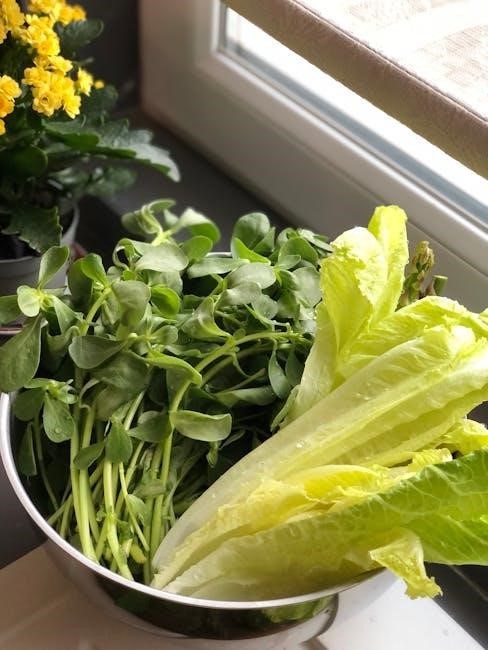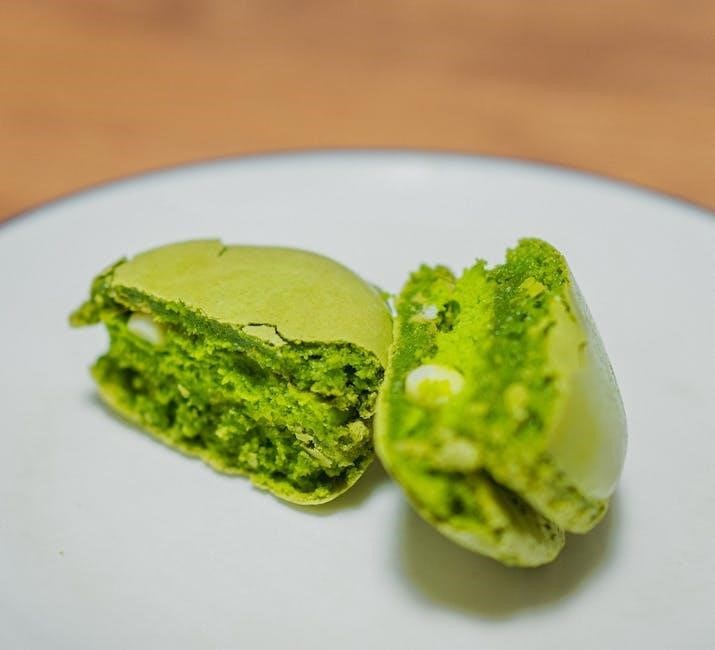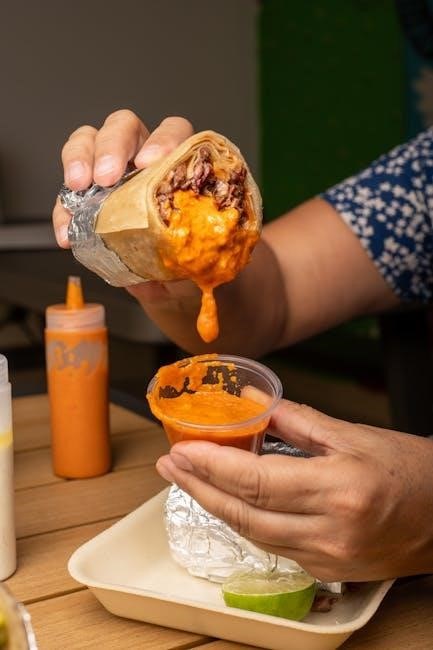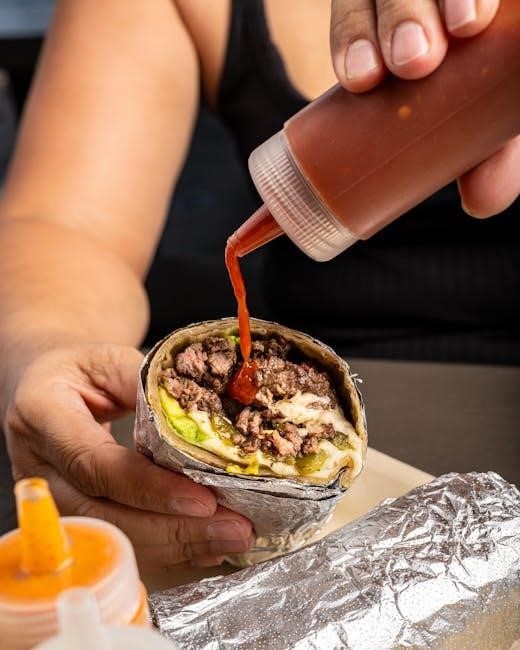Modernist Cuisine PDF is a groundbreaking culinary guide by Nathan Myhrvold and his team, blending science and art to redefine cooking techniques like sous vide and spherification.
Overview of the Modernist Cuisine Book Series
The Modernist Cuisine book series, authored by Nathan Myhrvold, Chris Young, and Maxime Bilet, is a groundbreaking, six-volume set that redefines culinary science. Published in 2011, it spans over 2,400 pages, offering a comprehensive exploration of cooking techniques, ingredients, and tools. The series is divided into themed volumes, with Volume 1 focusing on the history and science of cooking, while Volume 6 serves as a kitchen manual. The books are renowned for their detailed recipes, scientific explanations, and stunning visuals, including step-by-step photos and equipment cutaways. Modernist Cuisine at Home, an accompanying volume, adapts these professional techniques for domestic use, making advanced methods like sous vide accessible. The series also includes an e-book edition, enhancing accessibility. It has become a benchmark for culinary professionals and enthusiasts, blending art and science to transform modern cooking.
Key Features of the Modernist Cuisine PDF Edition

The Modernist Cuisine PDF edition offers a digital version of the iconic cookbook, providing unparalleled convenience and accessibility. This e-book, published by Inkling, is available as a standalone iOS app or through their eBook reader. It retains the original’s 2,400 pages of content, including over 400 recipes and variations, with detailed step-by-step photos. The PDF format ensures high-quality visuals, showcasing kitchen tools and techniques. Users can easily navigate through chapters, accessing comprehensive guides on sous vide, spherification, and other advanced methods. The e-book also includes the 228-page water-resistant kitchen manual, ideal for practical use. Its digital format allows for efficient searching and bookmarking, enhancing the cooking experience. This edition is a must-have for both professional chefs and home cooks seeking to master modernist techniques, providing a seamless blend of culinary innovation and scientific precision in a portable format.

The Core Concepts of Modernist Cuisine
Modernist Cuisine blends culinary art with scientific precision, emphasizing techniques like sous vide and spherification. It explores the chemistry and physics of cooking, using unconventional ingredients to revolutionize both home and professional kitchens.
The Science Behind Modernist Cooking Techniques
Modernist cuisine relies heavily on scientific principles to transform traditional cooking. Techniques like spherification and gelification use sodium alginate and calcium chloride to create unique textures. Sous vide cooking depends on precise temperature control to ensure even heating. The Maillard reaction, a chemical process, enhances flavors during searing. Emulsification, understood through surface tension, stabilizes mixtures like vinaigrettes. Modernist chefs use tools like ultrasonic homogenizers and centrifuges to innovate. These methods, rooted in chemistry and physics, redefine culinary possibilities, making cooking a precise, experimental art form.
Historical Development and Evolution of Modernist Cuisine
Modernist cuisine traces its roots to the late 20th century, evolving from molecular gastronomy pioneered by chefs like Ferran Adrià and Heston Blumenthal. The term “modernist” was popularized by Nathan Myhrvold, Chris Young, and Maxime Bilet in their 2011 magnum opus, Modernist Cuisine: The Art and Science of Cooking. This six-volume set revolutionized cooking by applying scientific principles to traditional techniques. The 2012 release of Modernist Cuisine at Home further democratized these methods, making them accessible to home cooks. Over time, modernist cuisine has integrated new technologies, such as sous vide and spherification, while inspiring a global culinary movement. Its digital evolution, including the Modernist Cuisine PDF edition, ensures its ideas continue to influence both professional and home kitchens, blending innovation with tradition.
Modernist Cuisine Techniques and Innovations
Modernist Cuisine techniques have revolutionized cooking through transformative methods like sous vide and spherification, utilizing innovative tools such as precision temperature control and ultrasonic homogenizers to unlock creativity and culinary boundaries.
Advanced Cooking Methods: Sous Vide, Spherification, and More
Modernist cuisine introduces groundbreaking techniques like sous vide, where food is sealed and cooked in a water bath at precise temperatures, ensuring uniform doneness. Spherification, using sodium alginate and calcium chloride, creates bite-sized liquid spheres, enhancing texture and presentation. Foamification transforms ingredients into airy textures, while gelification crafts stable, flavorful gels. These methods, along with dehydration and ultrasonic homogenization, redefine culinary possibilities, allowing chefs to innovate and push boundaries. Sous vide is particularly accessible for home cooks, requiring minimal equipment, while spherification and foamification offer artistic expression. These techniques not only elevate dishes but also challenge traditional cooking norms, making modernist cuisine a dynamic and evolving field that continues to inspire both professionals and home enthusiasts alike.
Use of Unconventional Ingredients and Tools
Modernist cuisine embraces unconventional ingredients and tools to push culinary boundaries. Ingredients like sodium alginate, xanthan gum, and calcium chloride are used to create unique textures, such as spherified ravioli or foam-topped dishes. Tools like centrifuges, ultrasonic homogenizers, and smoking guns are employed to achieve precise results. Sous vide machines and precision temperature-controlled ovens enable exact cooking temperatures, ensuring consistent outcomes; These tools and ingredients allow chefs to experiment with innovative techniques, transforming traditional dishes into artistic expressions. The use of unconventional elements not only enhances flavor but also redefines the dining experience, making modernist cuisine a fusion of science, creativity, and gastronomy. This approach has democratized access to professional-level cooking, inspiring home cooks to explore new possibilities in their kitchens.

Modernist Cuisine at Home
Modernist Cuisine at Home simplifies avant-garde techniques for domestic kitchens, offering accessible recipes and innovative methods to elevate everyday cooking with scientific precision and creativity.

Adapting Professional Techniques for Home Cooking
Modernist Cuisine at Home democratizes avant-garde cooking, enabling home cooks to adopt professional techniques using accessible tools. The book provides creative hacks, such as repurposing a slow cooker for sous vide, making complex methods achievable without specialized equipment. With over 400 recipes, it bridges the gap between restaurant and home kitchens, offering step-by-step guidance. Emphasizing precision and science, it encourages home cooks to experiment with unconventional ingredients and tools, fostering innovation. Detailed photos and clear instructions demystify processes like spherification, ensuring even novice cooks can succeed. By focusing on adaptability, Modernist Cuisine at Home inspires culinary creativity, proving that modernist techniques are not just for professionals but for anyone eager to elevate their cooking.
Essential Tools and Ingredients for Modernist Home Cooking
Modernist home cooking requires a few key tools and ingredients to achieve professional-level results; Essential tools include a sous vide water bath, precision thermometer, and kitchen torch for tasks like caramelizing sugars or adding smoky flavors. A blender or food processor is also vital for emulsions and purees. Ingredients like sodium alginate, calcium chloride, and xanthan gum enable techniques such as spherification and foam creation. While these items may seem unconventional, they are accessible and affordable for home use. The book guides readers in sourcing these tools and ingredients, emphasizing their versatility. By stocking a modernist pantry and investing in basic equipment, home cooks can unlock a world of innovative recipes and elevate their culinary skills. These tools and ingredients democratize modernist cuisine, making it approachable for anyone eager to experiment.
Modernist Cuisine and Its Impact on Global Dining
Modernist cuisine has revolutionized global dining by blending culinary artistry with scientific precision, inspiring chefs and redefining restaurant experiences worldwide with its innovative and visually stunning creations.
How Modernist Cuisine is Redefining Restaurant Experiences
Modernist cuisine is transforming restaurant experiences by blending scientific techniques with culinary creativity. Chefs now use tools like water baths and siphons to craft dishes with precision, ensuring consistent textures and flavors. The emphasis on presentation has elevated dining to an art form, with visually stunning creations that delight both the eyes and the palate. Restaurants are adopting these innovative methods to offer unique, immersive experiences, from spherified ravioli to foam-topped cocktails. This approach not only challenges traditional cooking norms but also educates diners about the science behind their meals. By pushing boundaries, modernist cuisine is redefining fine dining, making it more engaging and thought-provoking for food enthusiasts worldwide.
Future Trends in Modernist Cuisine and Food Culture
Modernist cuisine is poised to shape the future of food culture through innovative techniques and sustainability. As chefs embrace eco-friendly practices, expect a rise in zero-waste kitchens and plant-based innovations. Technology will play a key role, with tools like precision cookers and 3D food printers becoming mainstream. The globalization of flavors will continue, blending traditional cuisines with modernist methods. Home cooking will also evolve, as affordable molecular gastronomy tools democratize access to advanced techniques. Restaurants will focus on immersive dining experiences, combining art, science, and storytelling. With a growing emphasis on health and ethics, modernist cuisine will adapt to deliver nutrient-rich, visually stunning dishes. These trends ensure that modernist cuisine remains at the forefront of culinary evolution, inspiring both professionals and home cooks to push creative boundaries while addressing global food challenges.
Modernist cuisine has revolutionized the culinary world by merging science, creativity, and tradition. The Modernist Cuisine PDF series has become an indispensable resource for chefs and home cooks alike, offering detailed insights into innovative techniques like sous vide and spherification. By breaking down complex scientific principles into accessible practices, it has democratized modernist cooking. The PDF editions, such as Modernist Cuisine at Home, provide step-by-step guidance, making it easier for enthusiasts to experiment with cutting-edge methods. As culinary culture evolves, modernist cuisine continues to inspire new trends, emphasizing sustainability and experimentation. This movement not only redefines dining experiences but also empowers cooks to push boundaries, ensuring a vibrant future for food innovation. The Modernist Cuisine PDF remains a cornerstone for anyone exploring the intersection of art, science, and flavor.